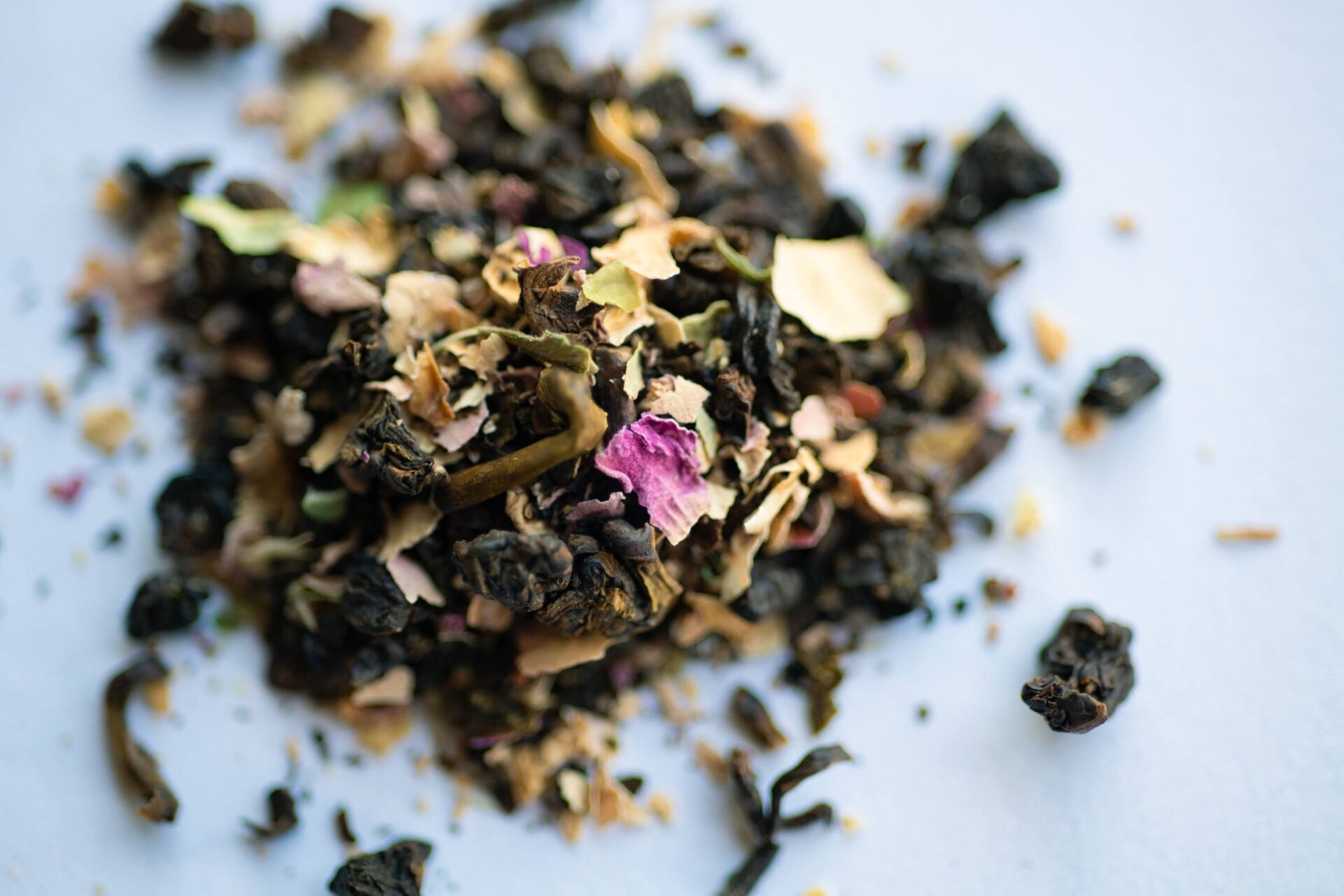The CONNACHT TEA HOUSE in Aomori Prefecture delivers beautiful teas, including original blends of organic flavor teas, and tea sets from around the world to cafes and shops in Japan.
“Flavor teas are not difficult. For herbal teas, it’s about finding the right flavor and fragrance.”
Miyake speaks light-heartedly about tea.
To find out why the teas produced by Miyake are loved by so many people, this second half of the interview continues to dig into Miyake’s “philosophy towards tea” and what he values when he delivers his tea to clients.
A collection of “Beautiful Tea” from around the world

Aomori is located in the northernmost part of Japan’s main island, Honshu.
The CONNACHT TEA HOUSE is just a 10 minute drive from the JR Aomori Station. When you enter the shop, there is a large counter area on your right.
Teas gathered from around the world, Chinese, Taiwanese, Japanese, and herbal teas, are all stored along their respective tea sets. The space is also shared with coffee beans and drippers.
Miyake, who holds a Chinese Tea Master license, serves his customers the teas he has specially selected.
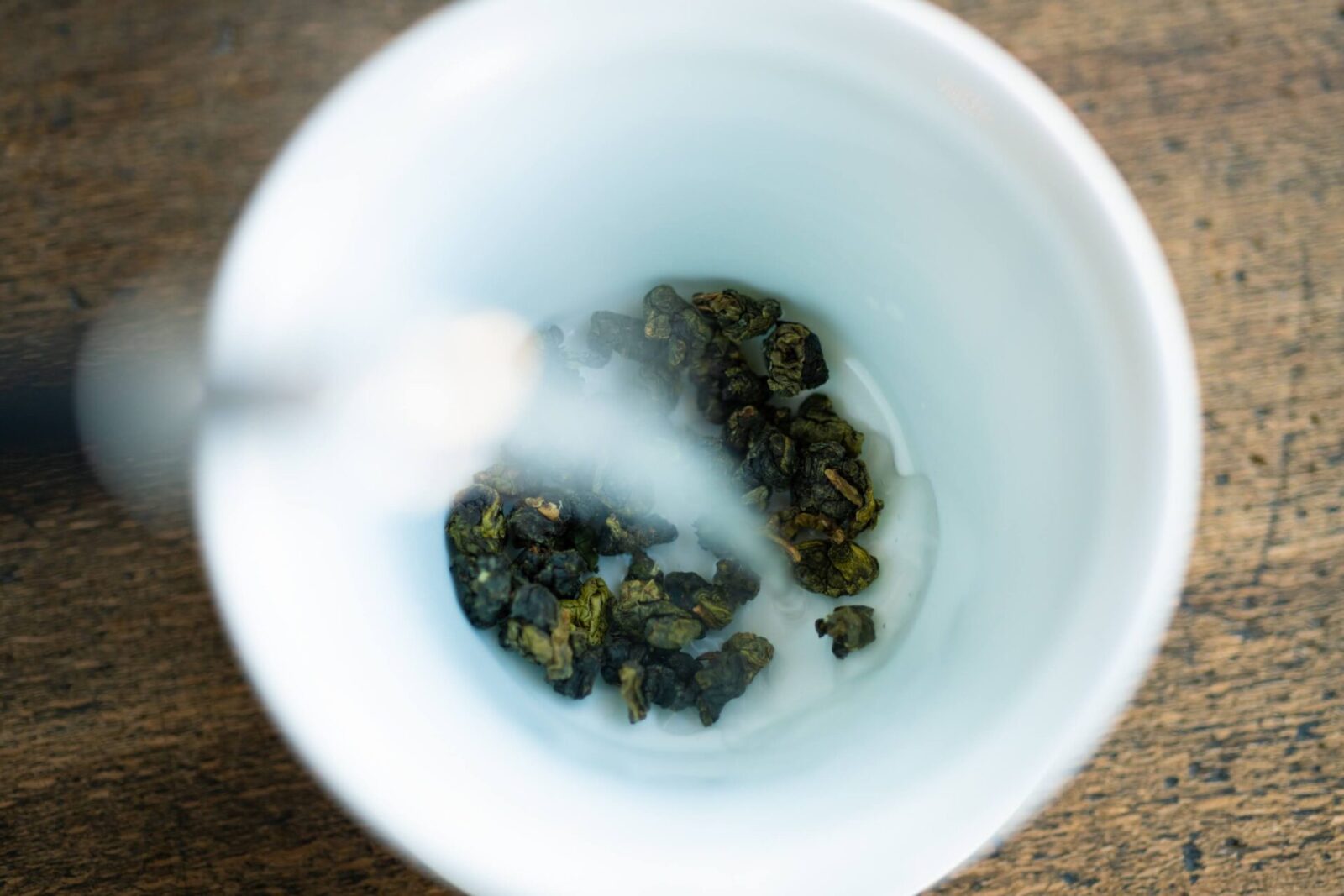
The “High Mountain Jin Xuan Oolong Tea” is an organic tea from Taiwan and it exerts a milk-like sweet aroma when hot water is poured on it. In western countries it is known as “Milky Oolong”.
Some tea makers add vanilla flavoring to their tea leaves, but the teas at CONNACHT TEA HOUSE have the soft fragrance that is unique to organic tea leaves. The store has a contract with a tea plantation located in the high mountains of Taiwan’s Central Mountain Range, which include mountains with altitudes up to 3000 meters.
Watching the tea leaves expand in the tea cup creates a rich and moving “Tea Time” experience.
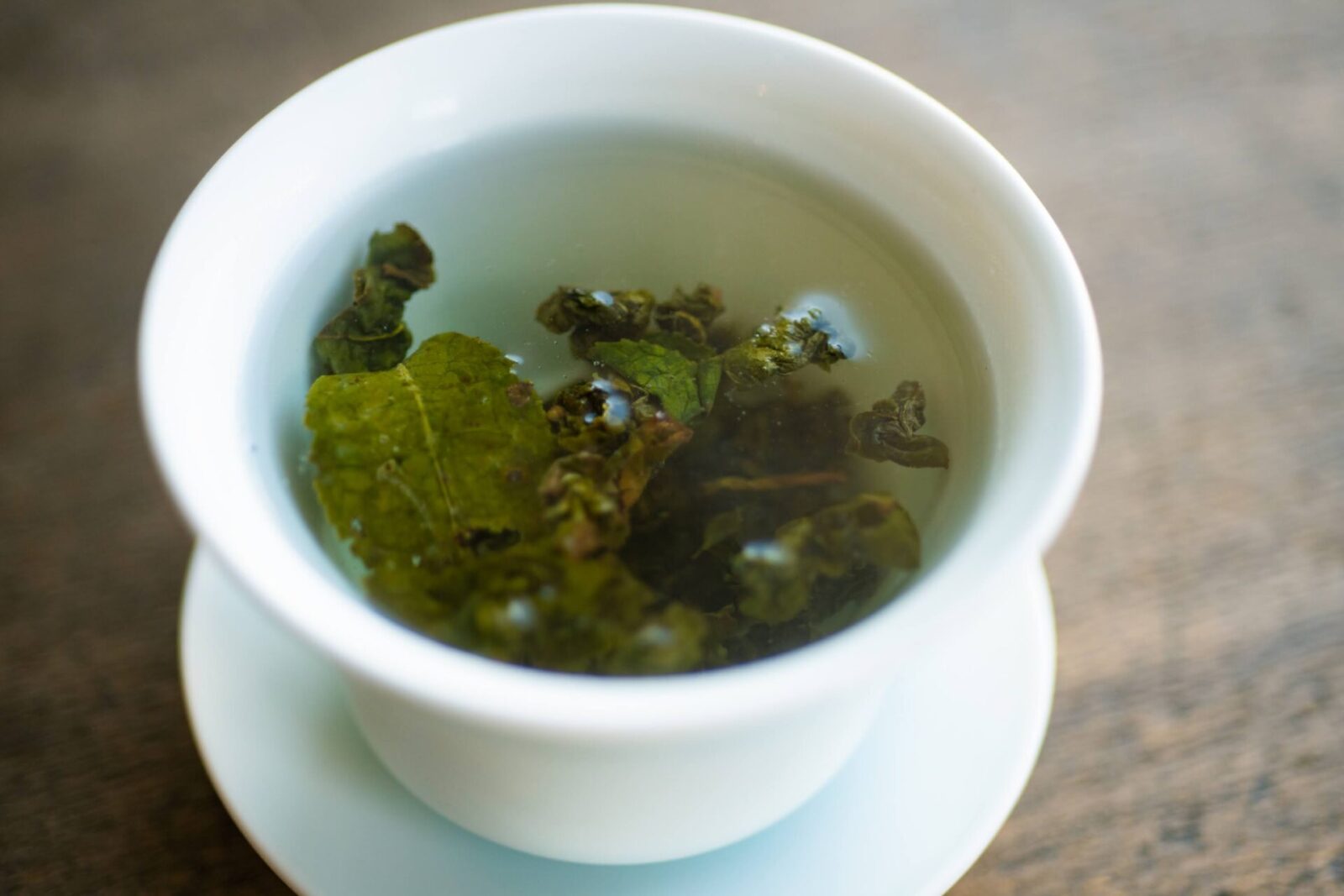
The next tea we tried was Bai Mudan, which is produced in an organic farm in Fuding of Fujian Province, China, a region known for high end white tea.
The name of the tea is said to come from the appearance of the tea’s baby sprouts, which are covered in soft fuzz. It is said that this tea removes excess heat from the body. The white tea made from Fuding Da Bai and Fuding Da Hao tea varieties has a sweet and gentle flavor.
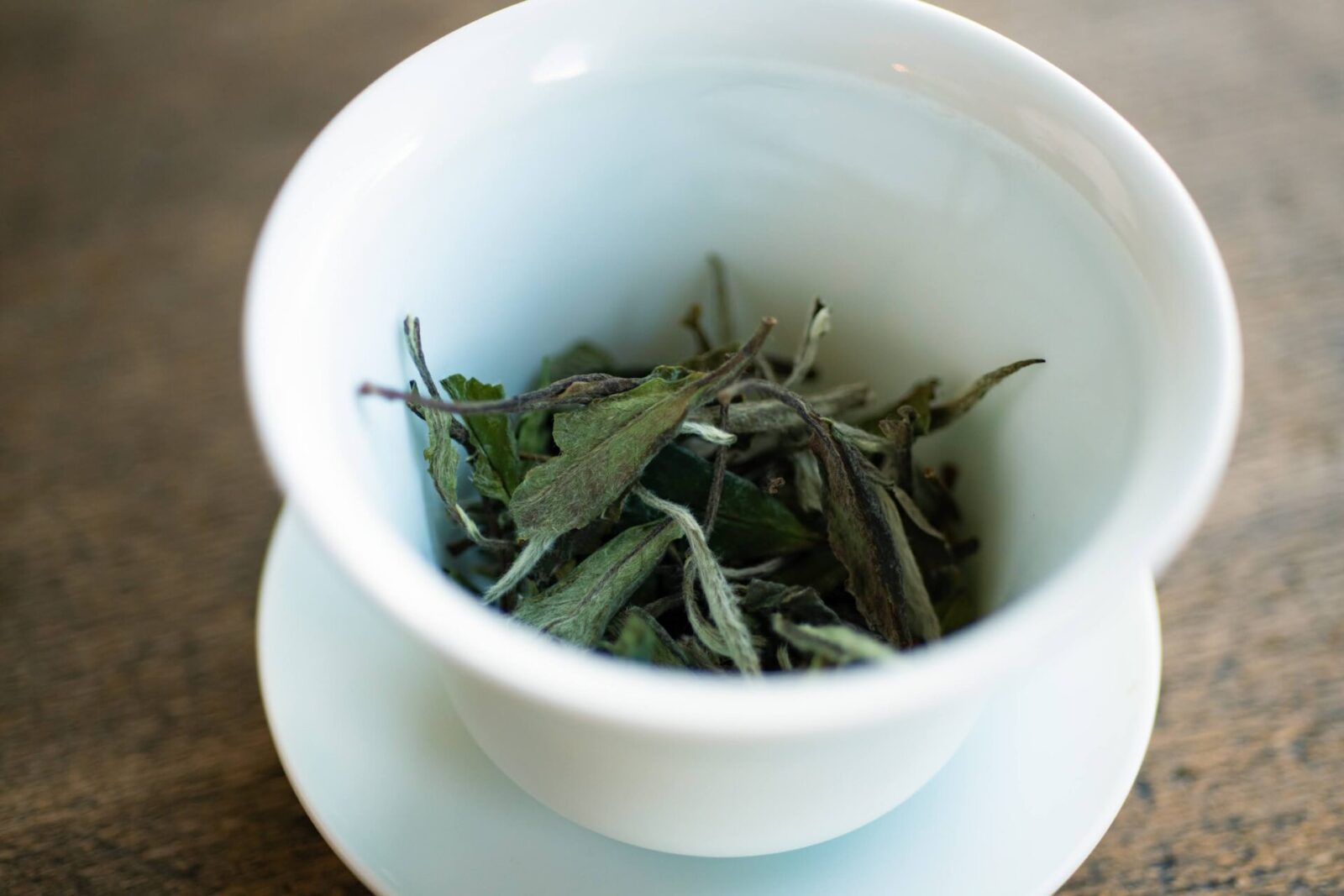
The production of white tea is very simple as there is no rubbing of the tea leaves in the process. All it requires is withering the roughly plucked leaves and drying them. Consequently, the quality of the tea leaves themselves are directly reflected in the cup of tea.
The light blue color and the mild and delicate sweetness relaxes the mind and body.
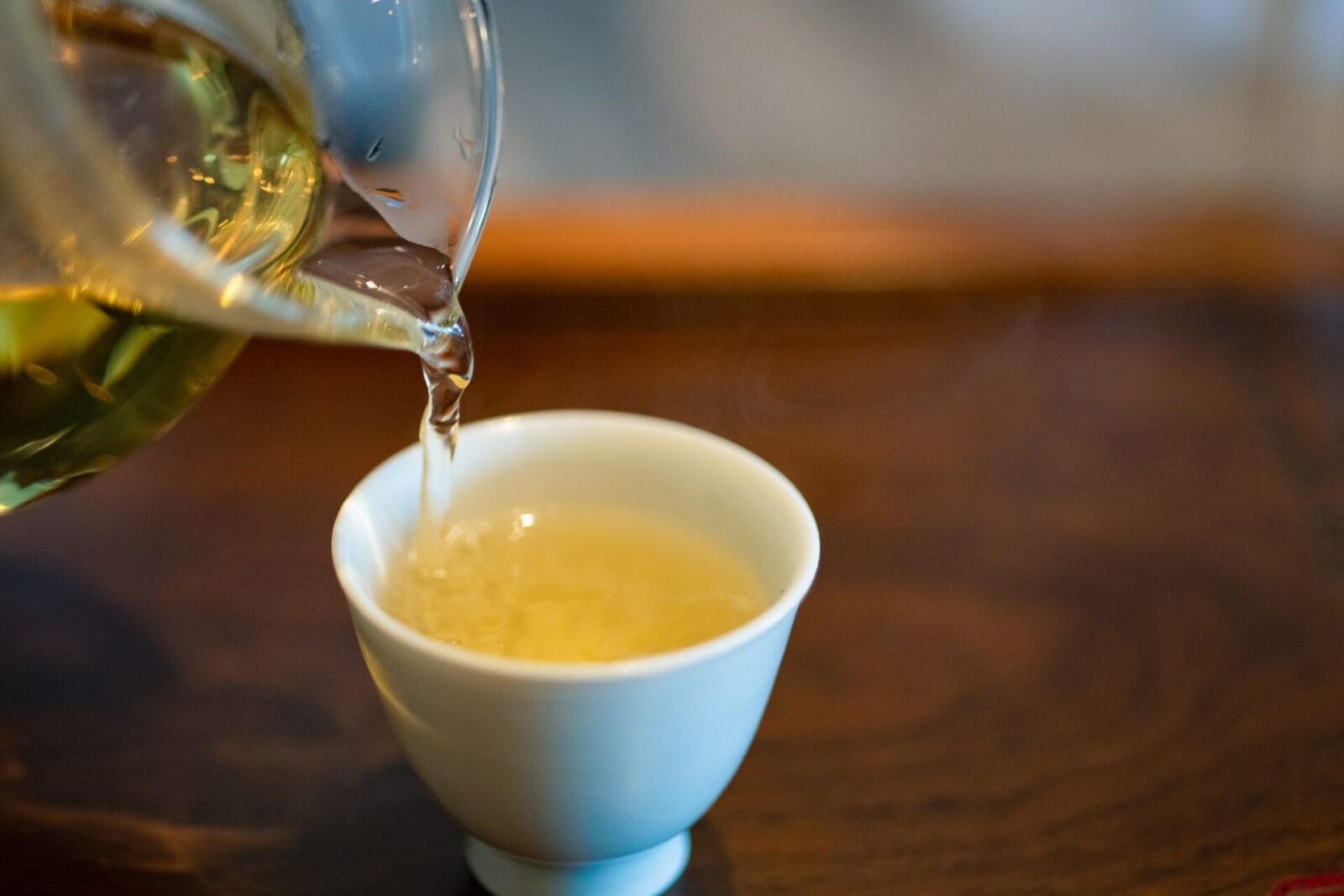
Why the original herbal teas are so loved
The CONNACHT TEA HOUSE not only sells strictly selected teas from around the world, they also sell original blend herbal teas.
Some unique gift items, such as the “something blue” bridal gift tea, will make you envision someone enjoying a special moment with tea. Much like choosing your favorite items in a general store, the store creates a fun environment to find tea leaves that suits your taste.

An especially attractive product is the Ni, Ocha, which means “with tea”. You can choose among 5 types of organic herbal teas to match your mood or physical needs. It is distributed to shops all around Japan.
This series was designed by Miyake, based on the concept of “becoming the person you want to be, with tea.” The tea bags are made from biomass materials, making it an eco-friendly product.
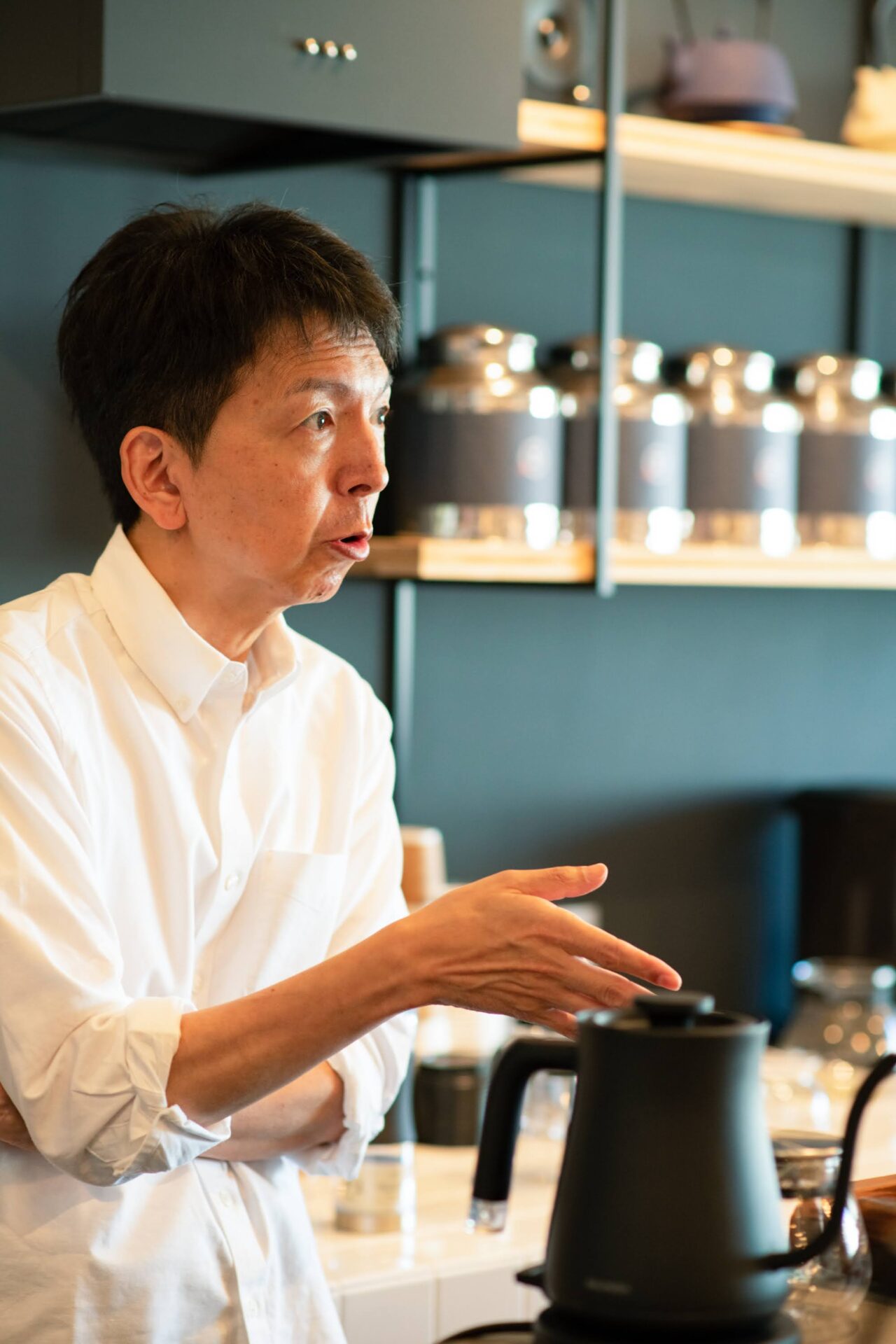
Miyake looks back at the development of the product saying, “I wanted to create herbal teas that matched a person’s physical needs.”
“Herbal tea had a reputation of being hard to drink, so I knew I wanted to make it a blend from the start. I started out by selling about 5 types of herbal blends that I personally found delicious.”
Considering the lifestyles of modern society, Miyake opted for “tea bags over leaves” and developed a new tea bag. They are individually packaged to make them more convenient for transport, for situations such as “taking one tea bag to work everyday.”
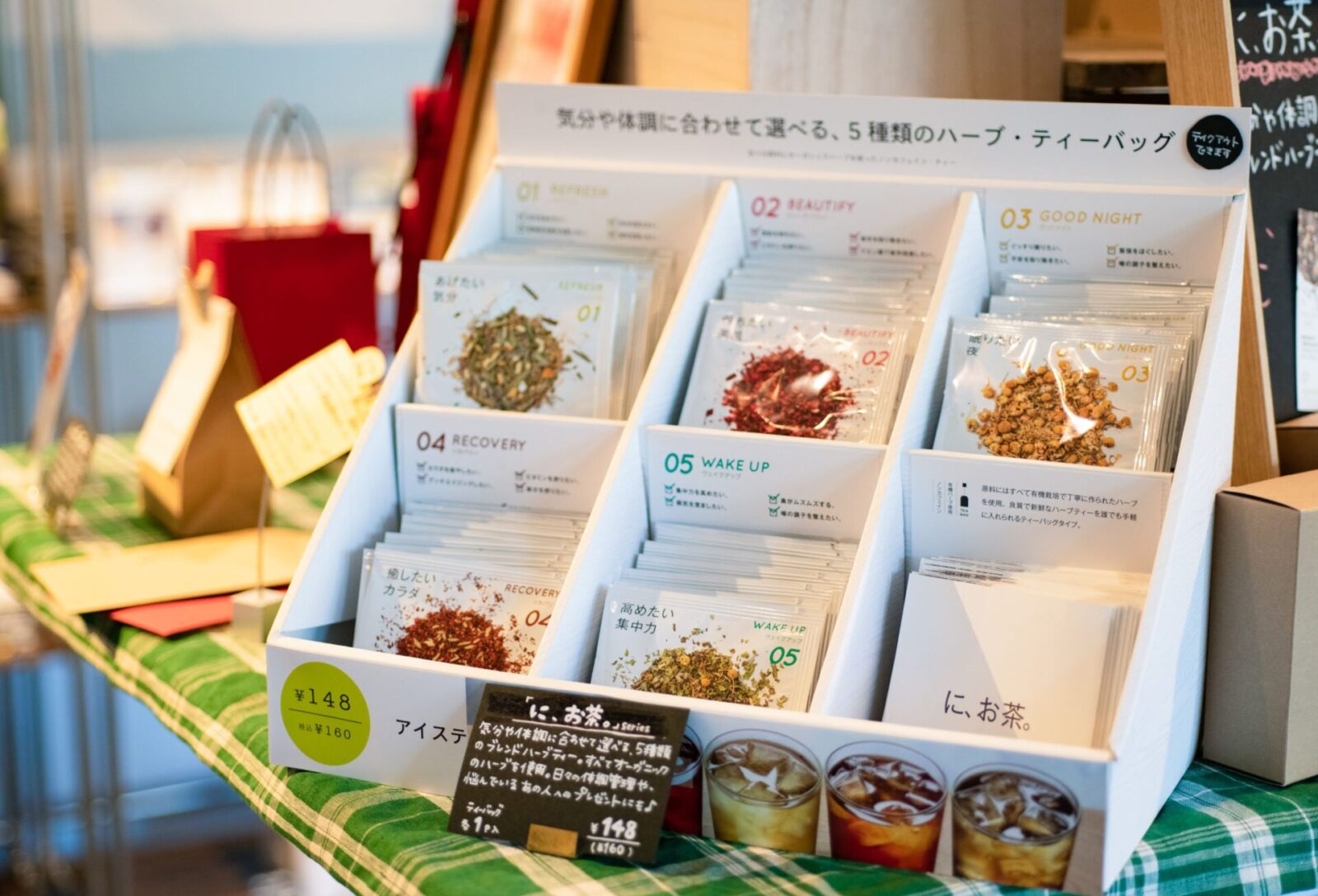
From a business standpoint, it was a challenge to develop individually packaged tea bags, which he previously sold in packs of 7 or 10. However, it turned out that people enjoy choosing individual tea bags and many of them end up buying more than one.
“When you can see the inside of the packaging and all 5 types are different colors, the question changes from ‘will I or will I not buy one?’ to ‘which one will I buy?’ Very few people buy just one and most people buy a few. For repeat customers, many of them buy the tea bags they tried themselves as gifts for other people.”
The most popular product among women
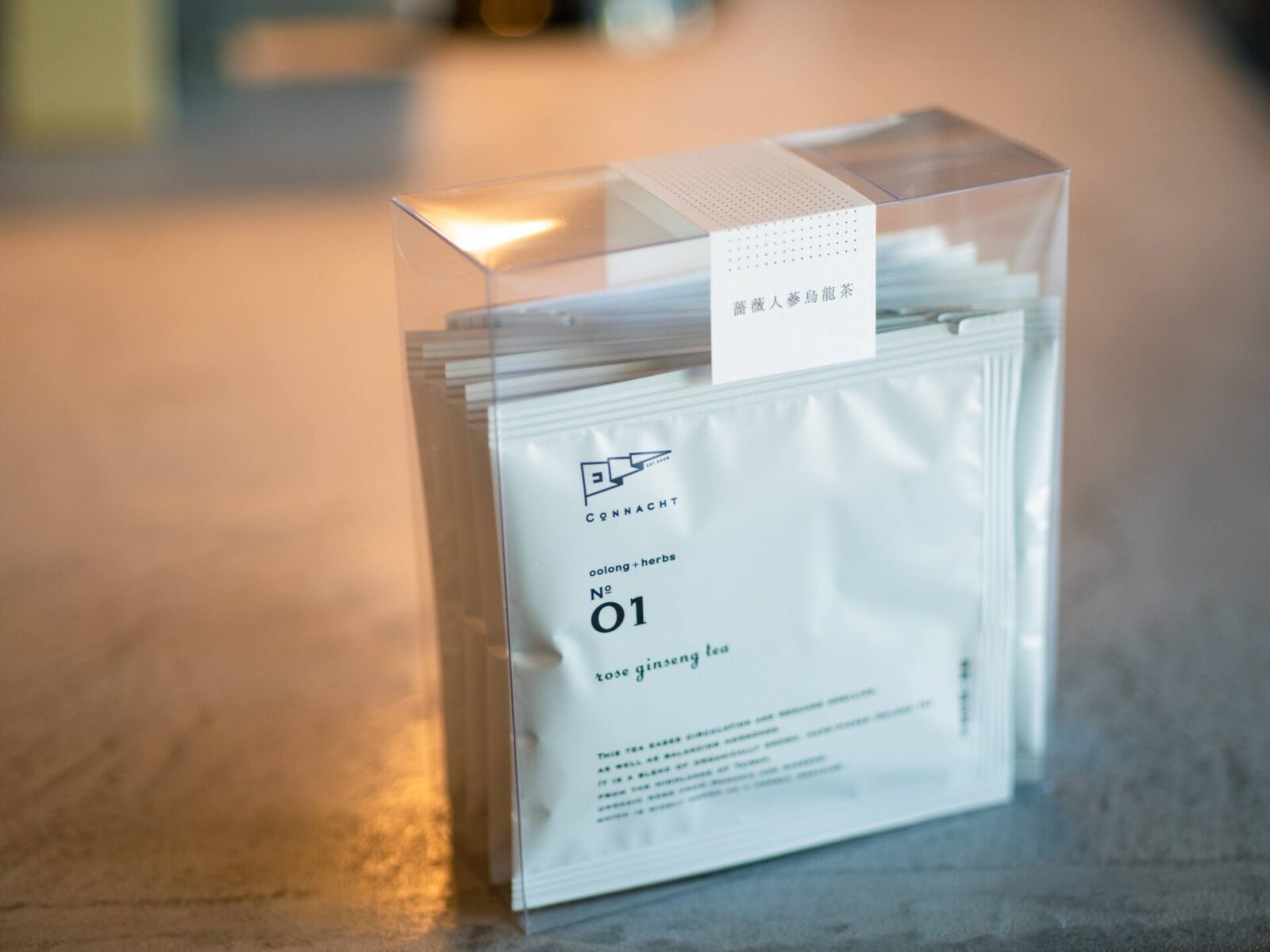
We asked what the most popular product was at the CONNACHT TEA HOUSE.
“It is this tea for health.” He showed us the rose ginseng tea package which he says most of his customers buy repeatedly.
“This product is not so much a product for leisure, but more of a necessity for the person. Many people drink it, experience the effects, and feel that they ‘must have it’, much like taking medicine. It takes about 10 days to feel the effects on your body, so the package includes 10 packs.”
The base tea of this product is organic ginseng tea that was introduced to Miyake in a tea store in Taiwan. Adding rose to that tea was Miyake’s idea.
“My female customers would tell me a lot about their health issues so in order to add something to help with female hormones, I added rose. Rose is a very popular flower, both in Asia and Europe, and looking at roses is uplifting. Furthermore, the aroma of roses is said to help in the release of estrogen, a female hormone.”
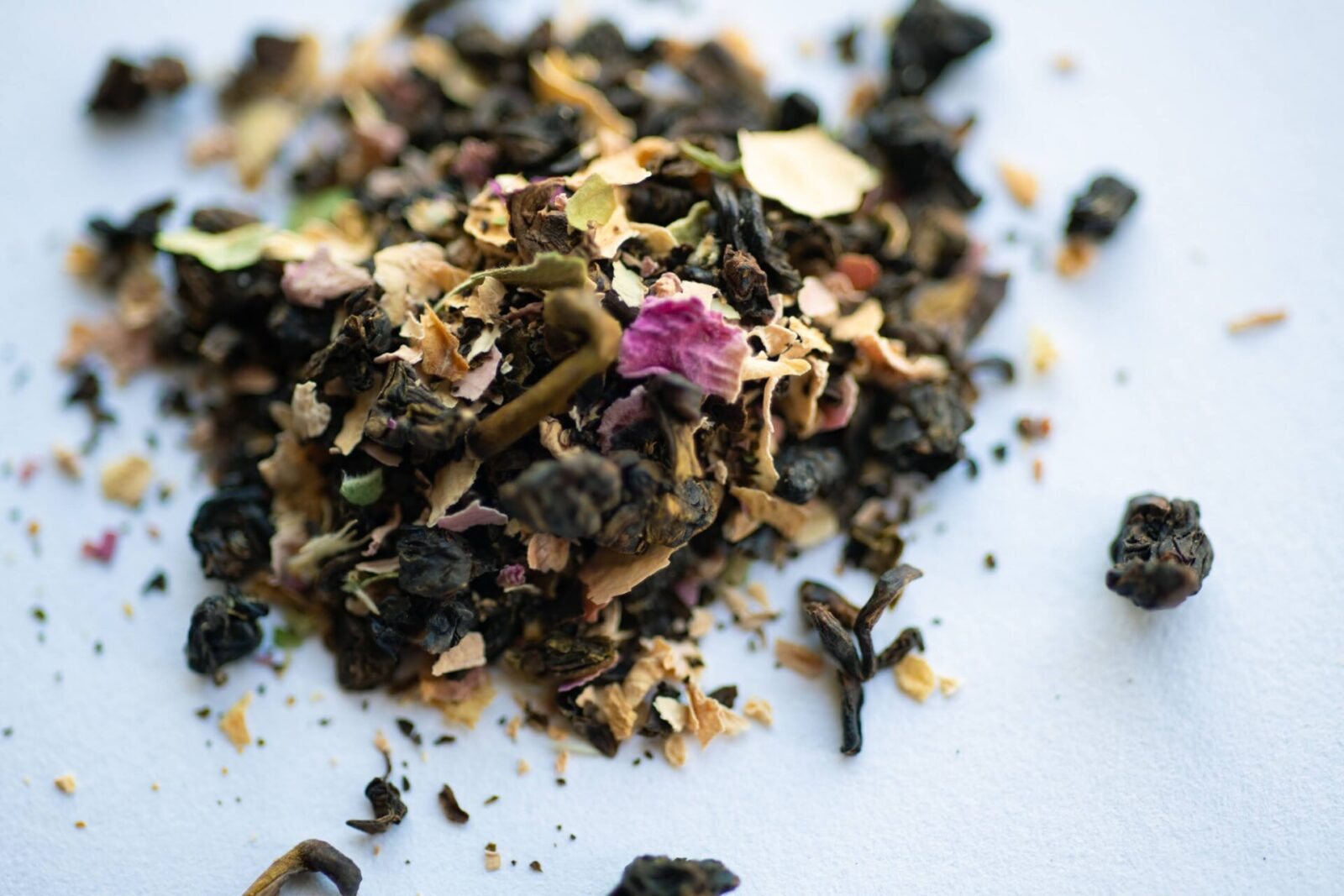
“To be honest, I was not a big fan of teas for health.”
Miyake did not plan on making healthy tea products, but when he gave out some samples to participants in his workshops, he received a lot of positive feedback and requests for purchase.
Miyake says that the rose ginseng tea has a “very mysterious effect.”
“My customers have told me that it has helped with menopause symptoms, such as swelling and low body temperatures. Of course there are discrepancies in the effects for each individual, but even in summer this product sells well because many people feel unwell from the air conditioning.”
The easy-to-drink and colorful health tea has become a power charger to support women in their daily lives.
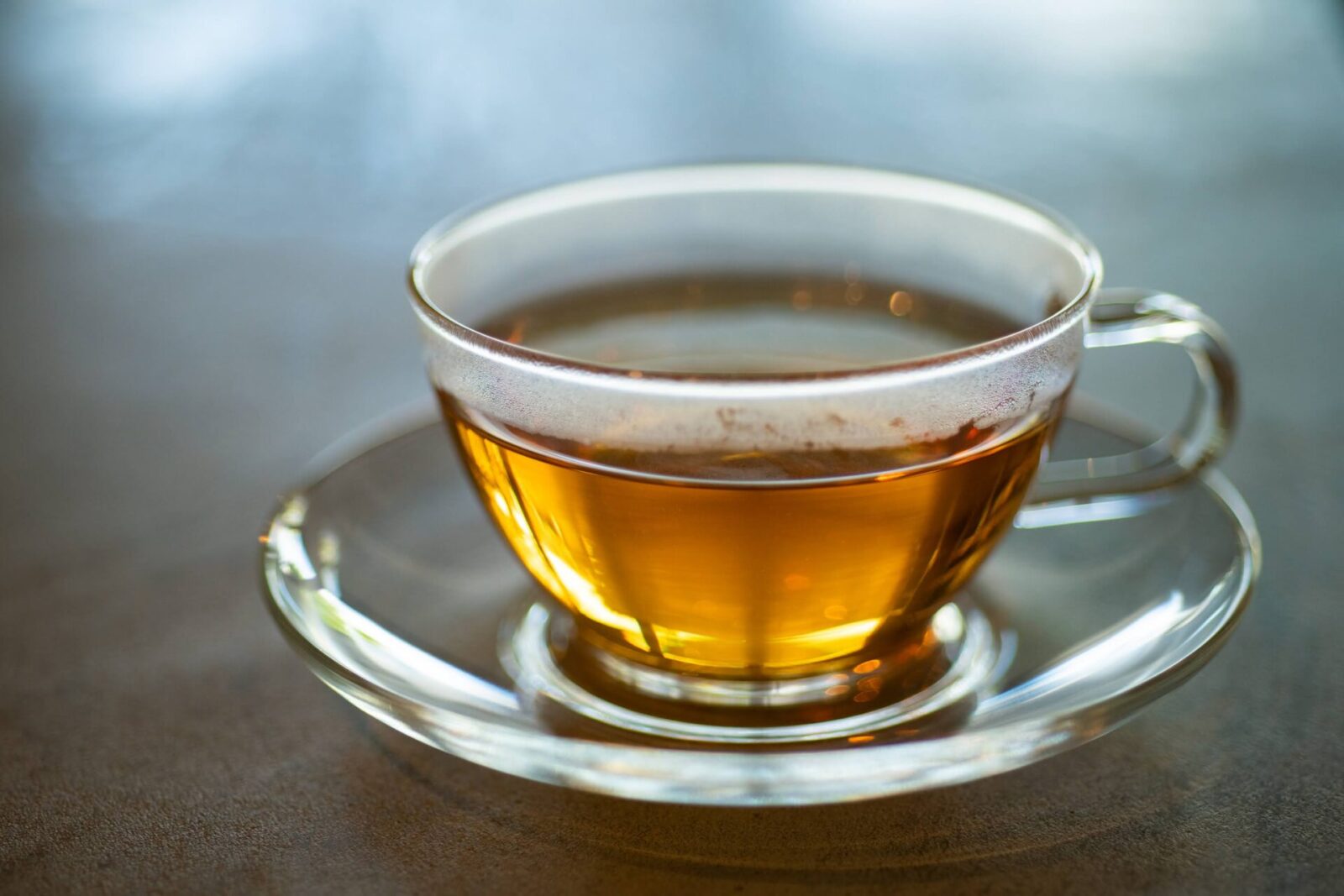
What is important when developing blend teas
Although Miyake collects teas from around the world and develops various original blend teas, Miyake says he “does not blend Japanese tea.” It is his way of respecting traditional Japanese tea masters.
So what does he think is important when developing his original teas?
“For herbal teas, the flavor and fragrance is most important.”
“Flavor teas are also not difficult. In my case, whether I am making flavor teas or herbal teas, I use very high quality teas for the ingredients. The most important thing for me is to be able to say that I always use the best quality teas.”
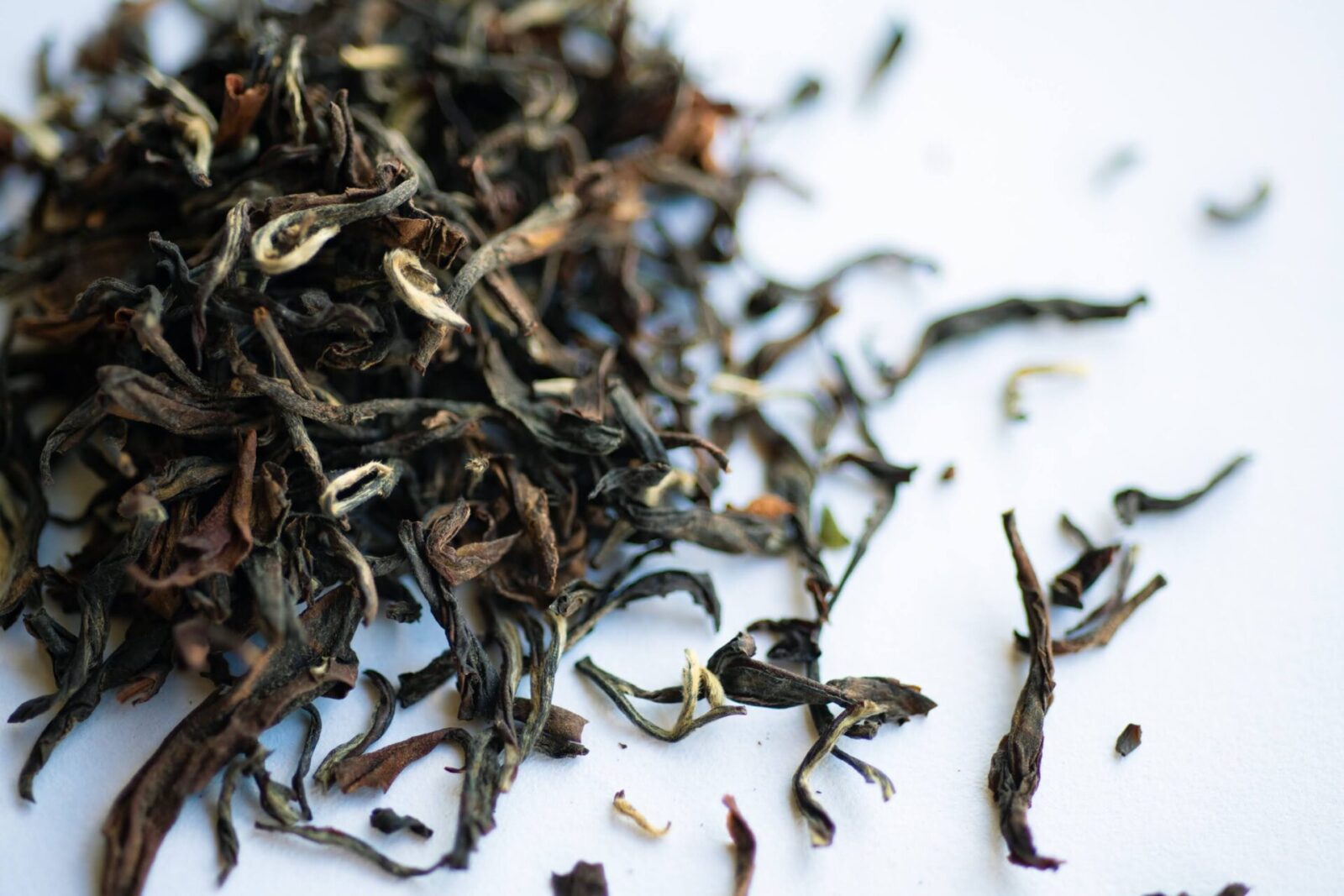
What is “Beautiful Tea”
The CONNACHT TEA HOUSE website states, “We collect only the most beautiful tea from around the world.” What does Miyake mean by “beautiful tea”?
“For me, ‘beautiful tea’ is ‘proper tea.’”
“For example, if you judge tea on whether you think it tastes good or bad, this can change according to an individual’s preferences. It simply depends on whether they like it or not. Tasting good or bad is subjective, so it cannot be used as a basis for criteria. This is why I developed a habit of judging if it is proper or not.”
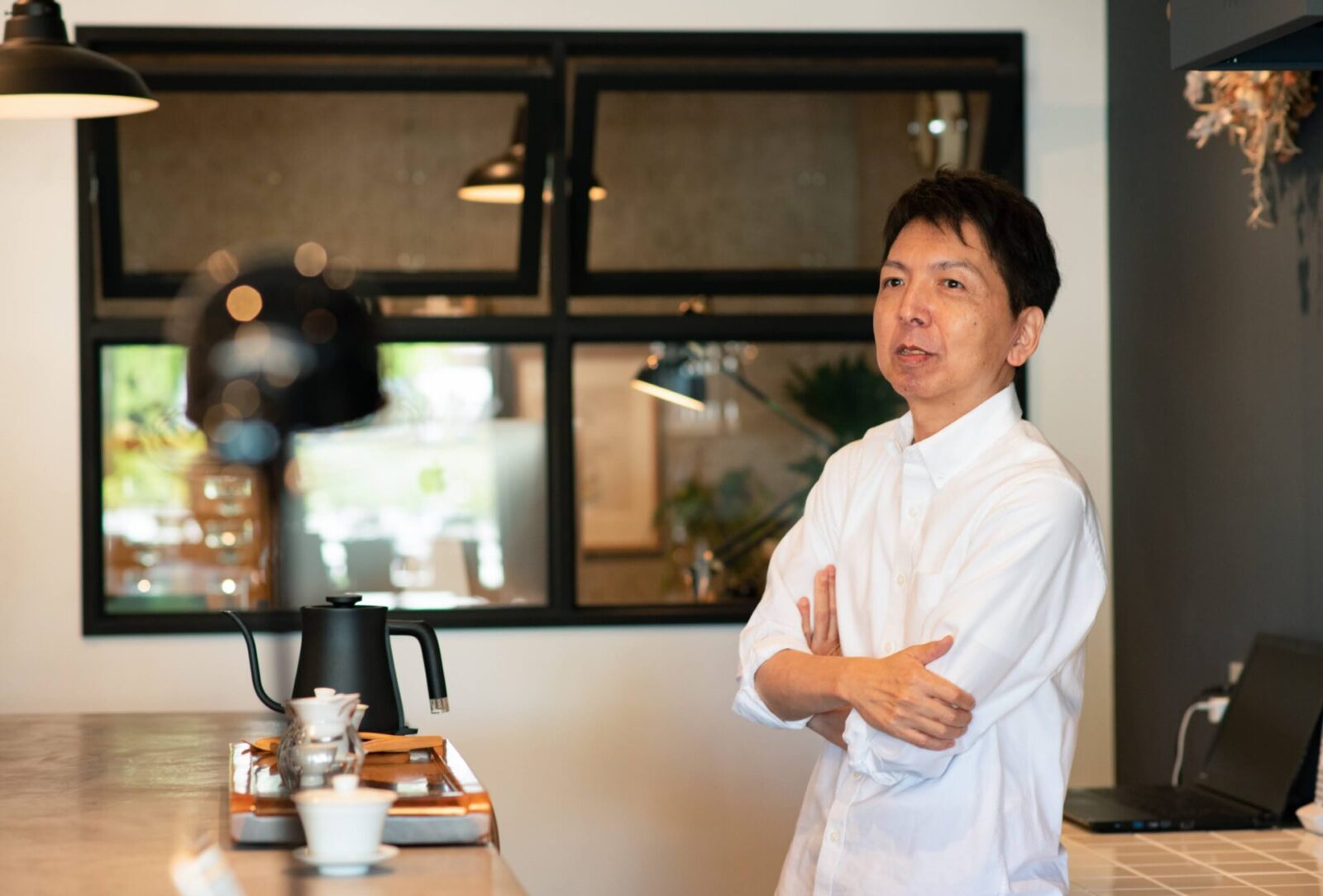
“If the tea I am tasting smells acidic, it may be because it was not stored properly. There may have been a problem in the withering process, or in the finishing process which prevents further fermentation of the tea leaves. These processes create the final flavor. You can sometimes tell by looking at the damages on the tea husks.”
In order to judge the “properness” of the tea, Miyake looks at the whole production process of the tea, starting from the tea plantation to the factory, transport and storage.
“I would also check if the temperature of my water was correct, or if my tea set was appropriate for the tea. Then, I would check if I am storing the tea correctly. Next, whether the tea was transported by air and then whether the processes at the factory are appropriate.”
“When I dig even further, I look up whether the factories overseas have a proper and clean environment. How well-kept are the tea plantations? Are children being exploited for cheap labor?”
In order to answer these questions, Miyake travels overseas to see the factories and tea plantations himself.

Miyake does not concern himself with the changes in tea that comes from the way an individual serves it. His concern is the process that the tea goes through until it reaches the customer.
“Tea can be shipped in containers and it is possible to do business transactions online and get samples. However, I believe all the processes need to be done properly to be considered a thing of beauty.”
“Saying something tastes good or bad is vague and can be interpreted in any way. As someone who delivers products to customers, I cannot guarantee quality without a criteria that I believe is absolutely proper.”
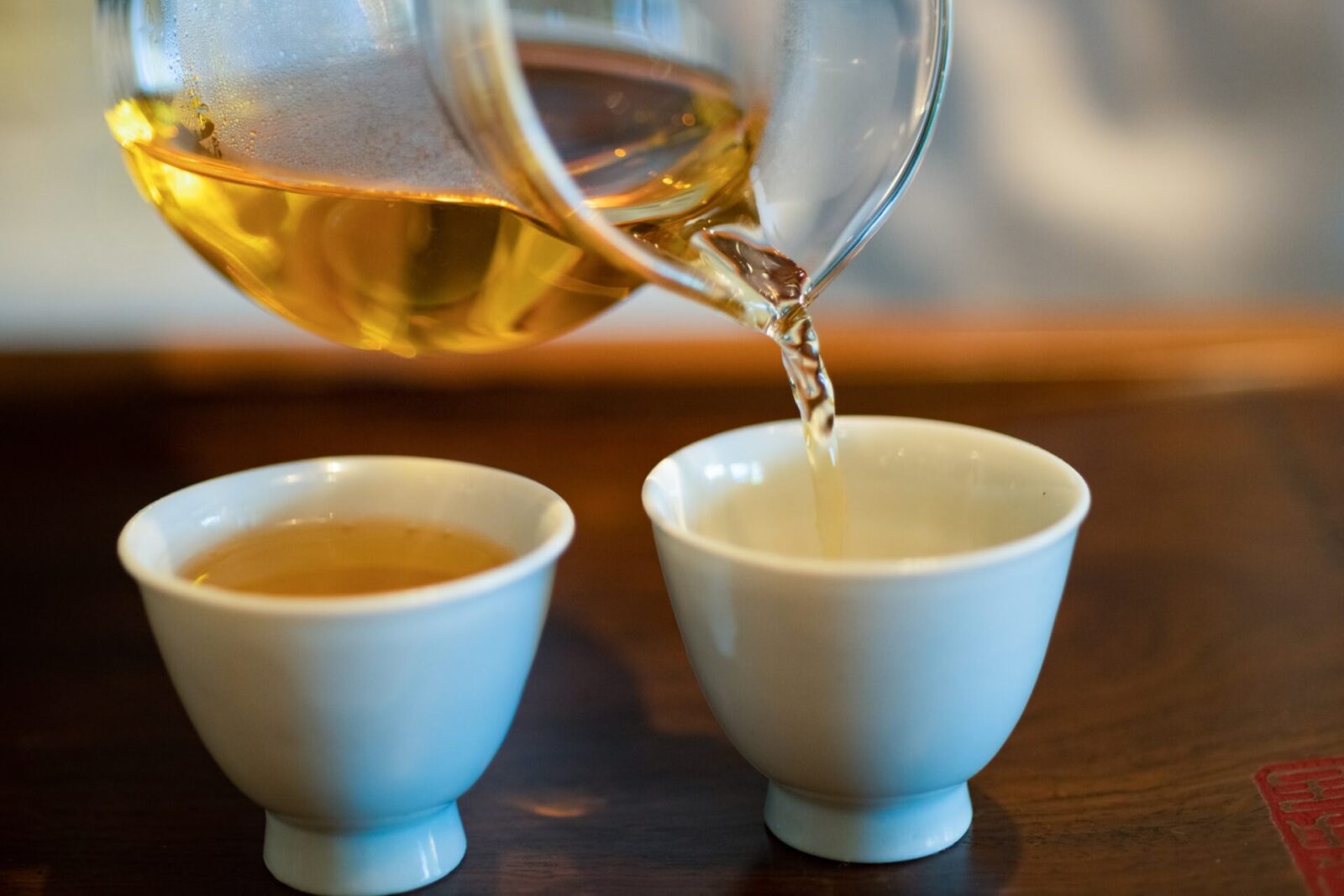
“Beautiful is a strong word,” says Miyake.
“A product that is made, distributed, stored, and sold properly. Then finally, delivered and served properly. To me, that is what makes ‘Beautiful Tea.’”
Beauty is properness. Miyake’s philosophy towards tea lies in these words.
(Photo: Yuko Kawashima)
Editor and creator of the future through words. Former associate editor of Huffington Post Japan. Became independent after working for a publishing company and overseas news media. Assists in communications for corporates and various projects. Born in Gifu, loves cats.
Editor. Born and raised in Kagoshima, the birthplace of Japanese tea. Worked for Impress, Inc. and Huffington Post Japan and has been involved in the launch and management of media after becoming independent. Does editing, writing, and content planning/production.
